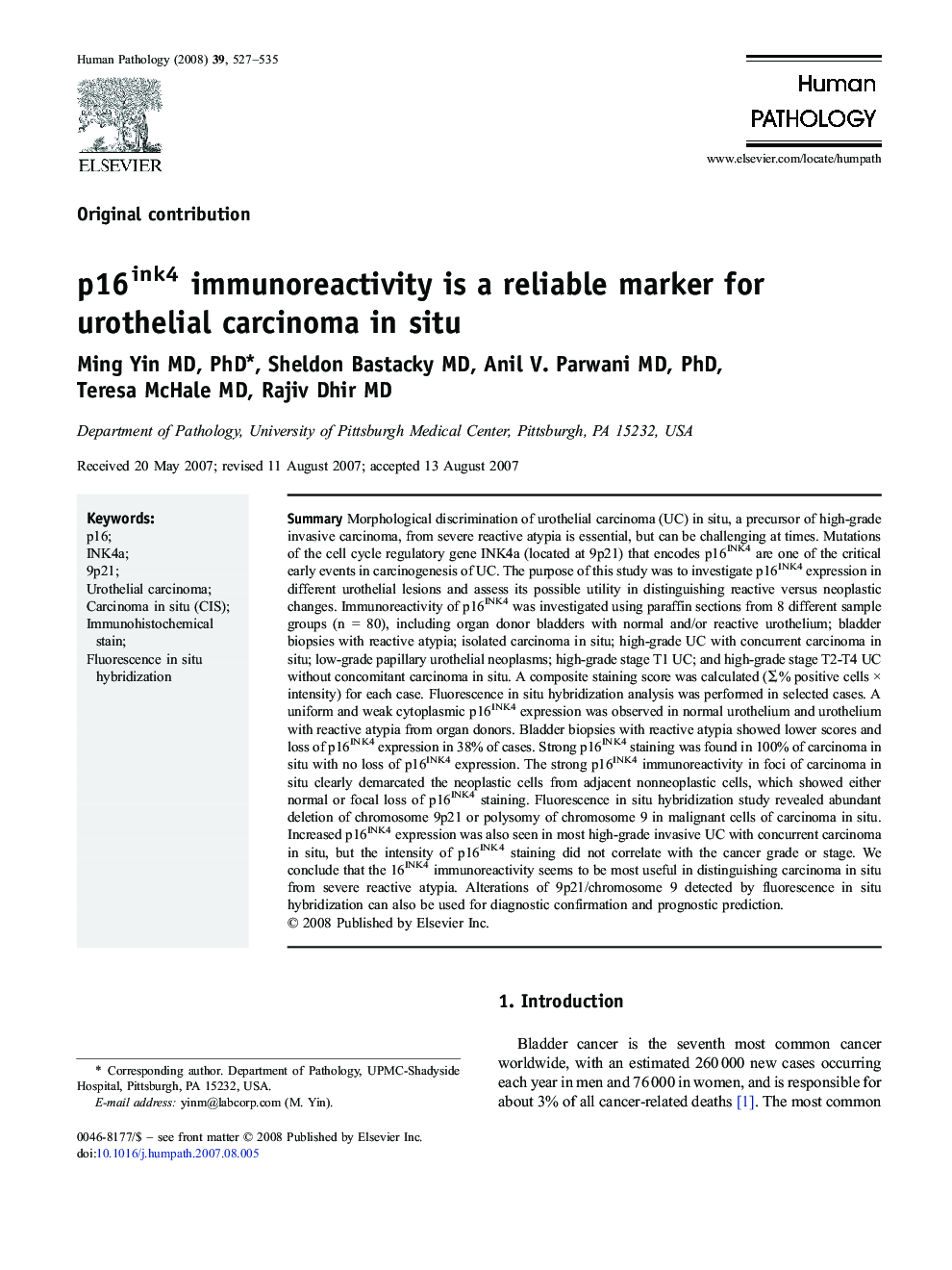| کد مقاله | کد نشریه | سال انتشار | مقاله انگلیسی | نسخه تمام متن |
|---|---|---|---|---|
| 4134938 | 1271477 | 2008 | 9 صفحه PDF | دانلود رایگان |

SummaryMorphological discrimination of urothelial carcinoma (UC) in situ, a precursor of high-grade invasive carcinoma, from severe reactive atypia is essential, but can be challenging at times. Mutations of the cell cycle regulatory gene INK4a (located at 9p21) that encodes p16INK4 are one of the critical early events in carcinogenesis of UC. The purpose of this study was to investigate p16INK4 expression in different urothelial lesions and assess its possible utility in distinguishing reactive versus neoplastic changes. Immunoreactivity of p16INK4 was investigated using paraffin sections from 8 different sample groups (n = 80), including organ donor bladders with normal and/or reactive urothelium; bladder biopsies with reactive atypia; isolated carcinoma in situ; high-grade UC with concurrent carcinoma in situ; low-grade papillary urothelial neoplasms; high-grade stage T1 UC; and high-grade stage T2-T4 UC without concomitant carcinoma in situ. A composite staining score was calculated (Σ% positive cells × intensity) for each case. Fluorescence in situ hybridization analysis was performed in selected cases. A uniform and weak cytoplasmic p16INK4 expression was observed in normal urothelium and urothelium with reactive atypia from organ donors. Bladder biopsies with reactive atypia showed lower scores and loss of p16INK4 expression in 38% of cases. Strong p16INK4 staining was found in 100% of carcinoma in situ with no loss of p16INK4 expression. The strong p16INK4 immunoreactivity in foci of carcinoma in situ clearly demarcated the neoplastic cells from adjacent nonneoplastic cells, which showed either normal or focal loss of p16INK4 staining. Fluorescence in situ hybridization study revealed abundant deletion of chromosome 9p21 or polysomy of chromosome 9 in malignant cells of carcinoma in situ. Increased p16INK4 expression was also seen in most high-grade invasive UC with concurrent carcinoma in situ, but the intensity of p16INK4 staining did not correlate with the cancer grade or stage. We conclude that the 16INK4 immunoreactivity seems to be most useful in distinguishing carcinoma in situ from severe reactive atypia. Alterations of 9p21/chromosome 9 detected by fluorescence in situ hybridization can also be used for diagnostic confirmation and prognostic prediction.
Journal: Human Pathology - Volume 39, Issue 4, April 2008, Pages 527–535